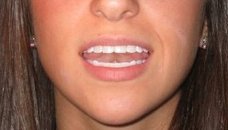Russian Accent Modification Made Easy!
Every language has its own sound system, grammar rules, and intonation patterns which make it unique. Learning a new language means incorporating new sounds, new intonation patterns, grammar rules, as well as other skills, so that you can become an effective communicator.
With Russian as your native language, there are naturally differences between your how you currently speak English and the standard American English accent. Some of these differences may not significantly impact your ability to be understood by Americans, while others may make a tremendous difference in your speech.
The areas listed below are a few examples of general areas your accent modification program may include. Other areas not included in this list may also be addressed, depending on your particular needs.
1. As a native Russian speaker, you may tend to not move your mouth when speaking English as much as American English speakers do. Your lips may be flatter and your teeth closer together. Americans move their lips quite a bit when speaking. Speaking Your Best will teach you how to move your mouth correctly to pronounce specific sounds and how it will improve your speech.
2. Speaking rate is an important part of speaking effectively. Slowing down your speaking rate may be a focus in your accent reduction program, not necessarily because you speak too quickly, but to help give you time to pronounce sounds more clearly. Speaking Your Best will evaluate your speech to determine if this skill needs to be reinforced and will work with you to teach you the speaking techniques that will assist you best.
3. Russian sounds are generally pronounced more harshly than American English sounds. This means that you use more force to say them. American English sounds, in comparison, are pronounced more lightly, using less force. In addition, you naturally have difficulty pronouncing some American English sounds because you don't have these sounds in Russian. Learn which sounds will make the biggest difference in your accent and how to pronounce them in American English. Once you learn the sounds that impact your spoken English most, you will find that this reduces your accent by significantly. These are the sounds Speaking Your Best will teach you first.
4. As a native Russian speaker, you may find that you have the general up and down pitch associated with American English. Stressing important words, therefore, may not be a significant weakness for you. Also, you most likely end statements correctly. Of course, Speaking Your Best will determine through your speech evaluation if stressing and intonation differences occur and need to be part of your accent reduction program.
5. Using the correct word order for specific types of words, forming tenses correctly, and including articles when speaking are a few of the grammar skills you may be experiencing difficulty with at the present time. Speaking Your Best will help you incorporate grammar skills consistently into your everyday speech to improve the quality of your language.
Accent modification courses with Speaking Your Best are customized to meet the specific needs you have and are designed to help you become an effective communicator in all speaking situations. Contact us today and learn how you can be a success by speaking your best!
With Russian as your native language, there are naturally differences between your how you currently speak English and the standard American English accent. Some of these differences may not significantly impact your ability to be understood by Americans, while others may make a tremendous difference in your speech.
The areas listed below are a few examples of general areas your accent modification program may include. Other areas not included in this list may also be addressed, depending on your particular needs.
1. As a native Russian speaker, you may tend to not move your mouth when speaking English as much as American English speakers do. Your lips may be flatter and your teeth closer together. Americans move their lips quite a bit when speaking. Speaking Your Best will teach you how to move your mouth correctly to pronounce specific sounds and how it will improve your speech.
2. Speaking rate is an important part of speaking effectively. Slowing down your speaking rate may be a focus in your accent reduction program, not necessarily because you speak too quickly, but to help give you time to pronounce sounds more clearly. Speaking Your Best will evaluate your speech to determine if this skill needs to be reinforced and will work with you to teach you the speaking techniques that will assist you best.
3. Russian sounds are generally pronounced more harshly than American English sounds. This means that you use more force to say them. American English sounds, in comparison, are pronounced more lightly, using less force. In addition, you naturally have difficulty pronouncing some American English sounds because you don't have these sounds in Russian. Learn which sounds will make the biggest difference in your accent and how to pronounce them in American English. Once you learn the sounds that impact your spoken English most, you will find that this reduces your accent by significantly. These are the sounds Speaking Your Best will teach you first.
4. As a native Russian speaker, you may find that you have the general up and down pitch associated with American English. Stressing important words, therefore, may not be a significant weakness for you. Also, you most likely end statements correctly. Of course, Speaking Your Best will determine through your speech evaluation if stressing and intonation differences occur and need to be part of your accent reduction program.
5. Using the correct word order for specific types of words, forming tenses correctly, and including articles when speaking are a few of the grammar skills you may be experiencing difficulty with at the present time. Speaking Your Best will help you incorporate grammar skills consistently into your everyday speech to improve the quality of your language.
Accent modification courses with Speaking Your Best are customized to meet the specific needs you have and are designed to help you become an effective communicator in all speaking situations. Contact us today and learn how you can be a success by speaking your best!
Common Mispronunciations for Russian Speakers

1. The “t” and “d” sounds are pronounced with the tongue too far forward
The Russian “t” and “d” sounds are usually pronounced with the tongue tip flat on the ridge (flat part behind the upper front teeth) pushing against the back of the upper front teeth. This creates a “heavier” sound than the American English “t” and “d” sounds. The “d” sound will sound thicker or heavier, while the “t” sound will sound similar to the American English “d.”
The American English "t" and "d" sounds are both formed by placing the tip of the tongue behind your upper front teeth, but not touching them. Using just the tip of the tongue makes the sounds lighter. Begin by placing the tip of your tongue behind your teeth, hold your breath, then force the sound out. The only difference between these two sounds is in what we call "voicing." Your vocal cords in your throat make your voice; when you talk, they vibrate, and when you breathe out, they don't. When you say the "t" sound, you don't use your voice. This means that you are only pushing air out because your vocal cords in your throat are not vibrating. If you place your hand on your throat when you say the "t" sound, you should not feel any vibratioin and you should not hear your voice. The only thing you should hear is a puff of air as you force out the "t" sound. The "d" sound uses your voice. If you place your hand on your throat when you say this sound, you will feel it vibrate.
When "t" sounds like "d":
The word “to” will sound like “do”
The word “tell” will sound like “dell”
The Russian “t” and “d” sounds are usually pronounced with the tongue tip flat on the ridge (flat part behind the upper front teeth) pushing against the back of the upper front teeth. This creates a “heavier” sound than the American English “t” and “d” sounds. The “d” sound will sound thicker or heavier, while the “t” sound will sound similar to the American English “d.”
The American English "t" and "d" sounds are both formed by placing the tip of the tongue behind your upper front teeth, but not touching them. Using just the tip of the tongue makes the sounds lighter. Begin by placing the tip of your tongue behind your teeth, hold your breath, then force the sound out. The only difference between these two sounds is in what we call "voicing." Your vocal cords in your throat make your voice; when you talk, they vibrate, and when you breathe out, they don't. When you say the "t" sound, you don't use your voice. This means that you are only pushing air out because your vocal cords in your throat are not vibrating. If you place your hand on your throat when you say the "t" sound, you should not feel any vibratioin and you should not hear your voice. The only thing you should hear is a puff of air as you force out the "t" sound. The "d" sound uses your voice. If you place your hand on your throat when you say this sound, you will feel it vibrate.
When "t" sounds like "d":
The word “to” will sound like “do”
The word “tell” will sound like “dell”

2. The “w” and “v” sounds are often interchanged
Right now you are most likely pronouncing the American English "w" like "v" and the "v" like "w."
To form the American English “w”, round your lips in a tight circle as you push them in front of your front teeth. If you say "oo-wuh", this will give you a good "w" sound.
When "w" sounds like "v""
The word “wet” will sound like “vet”
The word “over” will sound like “ower”
Right now you are most likely pronouncing the American English "w" like "v" and the "v" like "w."
To form the American English “w”, round your lips in a tight circle as you push them in front of your front teeth. If you say "oo-wuh", this will give you a good "w" sound.
When "w" sounds like "v""
The word “wet” will sound like “vet”
The word “over” will sound like “ower”

”For the “v” sound, keep your lips flat and lightly bite your lower lip. You'll feel your lower lip vibrate as you pronounce this sound.
When "v" sounds like "w"
The word "vial" will sound like "dial"
The word "visor" will sound like "wiser"
When "v" sounds like "w"
The word "vial" will sound like "dial"
The word "visor" will sound like "wiser"

3. The “r” sound is rolled
The Russian “r” is very different from the American “r” sound. In your native language, you pronounce it by what we call “rolling” or "trilling" it. This means that you lightly place the tip of your tongue just behind your upper front teeth and let it quickly hit it. It may hit it once or several times.
To pronounce the American English “r” sound you begin by making a slight circle with your lips. As you do this, your lower jaw automatically pushes forward a bit. Then, press the sides of your tongue against your upper side teeth, just as if you were going to say "ee." Then raise the tip of your tongue slightly. Make sure the tip of your tongue does NOT touch the roof of your mouth.
The Russian “r” is very different from the American “r” sound. In your native language, you pronounce it by what we call “rolling” or "trilling" it. This means that you lightly place the tip of your tongue just behind your upper front teeth and let it quickly hit it. It may hit it once or several times.
To pronounce the American English “r” sound you begin by making a slight circle with your lips. As you do this, your lower jaw automatically pushes forward a bit. Then, press the sides of your tongue against your upper side teeth, just as if you were going to say "ee." Then raise the tip of your tongue slightly. Make sure the tip of your tongue does NOT touch the roof of your mouth.